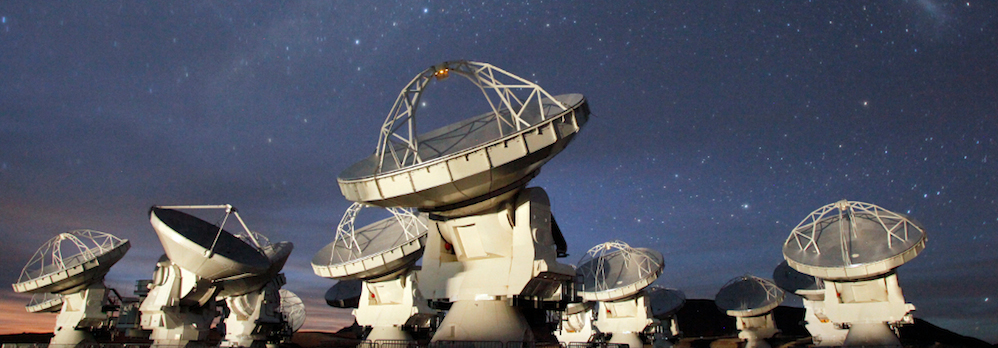
Artist impression illustrating a super-massive black hole with X-ray emission emanating from its inner region (pink) and ultrafast winds streaming from the surrounding disk (purple). Credit: ESA
Active Galactic Nuclei (AGN) are thought to have a profound effect on large scales through feedback mechanisms. AGN gas outflows release vast amounts of energy into the interstellar medium and can clear out the surrounding gas, possibly regulating star formation in the host galaxy as well as preventing further gas accretion onto the black hole. Such feedback may well contribute to the intimate observed relationship between the central black hole and the host galaxy properties.
The fastest gas outflows (the so-called Ultra Fast Outflows or UFOs) have velocities higher than 10,000 km/s and are observed at X-ray energies, with the most extreme cases reaching velocities up to 100,000 km/s (or about 30% of the velocity of light). These outflows originate in the inner regions of AGN and they are believed to be the ultimate drivers of the observed large scale outflows that are actually responsible for AGN feedback on galactic scales.
We have observed the AGN IRAS 13224-3809 in the X-rays with XMM-Newton and NuSTAR. XMM-Newton focused on this target for 17 days with the goal of studying its X-ray variability from minutes to weeks in much greater detail than ever possible before. IRAS 13224-3809 is in fact the most variable AGN in the X-rays, with observed changes by up two orders of magnitude in X-ray flux in time-scales as short as a few hours.
We have detected an UFO in IRAS 13224-3809 with a velocity of 71,000 km/s (about 24% the velocity of light) finding multiple signatures both at high and low X-ray energies and using different detectors. The most relevant result is that the outflow is seen to respond to the X-ray variability in less than an hour, hundreds of times faster than ever seen before. This allows us to link the X-ray emission originating a few gravitational radii (the size of the black hole event horizon) away from the central black hole to the accelerated outflow which is likely launched further away, at distances of hundreds gravitational radii from
the centre.

X-ray spectra of IRAS 13224-3809 at different flux levels being modelled without considering any absorption by the outflow showing the flux dependence of the wind features. No significant absorption is present in the high flux (top) or medium flux (middle) spectra, while it is highly significant in the low flux (bottom) spectrum. See Parker et al. 2017 for further details.
The X-ray absorption features (the signature of the outflowing gas) are seen to appear and disappear during the 17 days long X-ray observation following the observed X-ray flux variations. As the flux increases, the temperature of the outflow gets higher (because the gas is more irradiated by X-rays), electrons are stripped away from their atoms in the wind, and the strength of the observed absorption features is reduced accordingly.
Our findings provide clear evidence for the link between the X-ray emission from the inner accretion flow and the outer wind, and they are a key step forward in understanding how black hole winds and outflows are launched and accelerated. This is an essential and crucial part of understanding the ability of such outflows to regulate black hole accretion and star formation in the host galaxy, and thus contribute to the black hole- galaxy co-evolution across cosmic time.
Published in Parker M.L. et al., Nature, Volume 543, Issue 7643, pp. 83-86 (2017) – DOI: 10.1038/nature21385
with participation of Giovanni Miniutti from CAB
Further reading:
http://www.esa.int/Our_Activities/Space_Science/Rapid_changes_point_to_origin_of_ultra-fast_black_hole_winds
https://www.sciencedaily.com/releases/2017/03/170301132003.htm
https://www.nustar.caltech.edu/news/nustar170301
